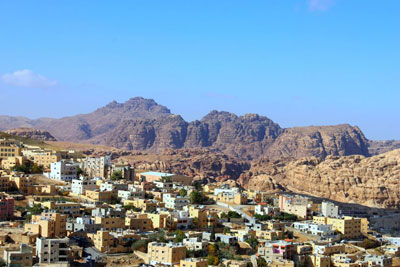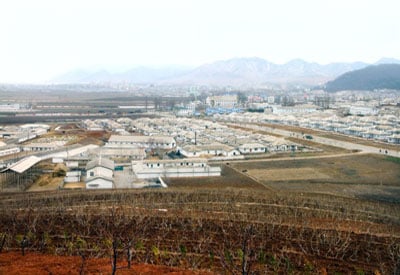The Hashemite Kingdom of Jordan is located on the East Bank of the River Jordan in Western Asia. It borders Saudi Arabia to the east and south-east, Iraq to the east, Syria to the north and West Bank and Israel to the west, sharing control of the Dead Sea. Jordan’s only port is at its southern tip, at the Gulf of Aqaba, which is shared with Israel, Egypt, and Saudi Arabia. Much of Jordan is covered by the Arabian Desert. However, the north-western part of Jordan is part of the Fertile Crescent. The capital city is Amman.
During its history, Jordan has seen numerous civilizations, including those of the Ancient Near East with the Canaanite and later otherSemitic peoples such as the Edomites, and the Moabites. Other civilizations possessing political sovereignty and influence in Jordan were:Akkadian, Assyrian, Israelite/Judean, Babylonian, and Persian empires. The lands of Jordan were for a time under the rule of Pharaonic Egypt, composed part of the greater Kingdom of Israel (including the later Judaean Kingdom, Hasmonaen Kingdom of Israel and Herodian Dynasty), and notably, the region of Jordan also gave birth to the Nabataean civilization which left rich archaeological remains at Petra, one of the New Seven Wonders of the World located in the Ma’an Governorate. Cultures further west also left their mark, such as the Macedonian/Greek/Hellenistic, Roman, Byzantine, and Ottoman empires. Since the seventh century, the area has been under the primary rule of Muslim and Arab cultures, with the exceptions briefly for the area in Western Jordan during the Crusader Kingdom of Jerusalem, and for the entire region during the early-mid twentieth century under British rule which led to Jordan’s establishment as an autonomous state.
The Hashemite Kingdom of Jordan is a constitutional monarchy with representative government. The reigning monarch is the chief executive and the commander-in-chief of the armed forces. The king exercises his executive authority through the prime ministers and the Council of Ministers, or cabinet. The cabinet, meanwhile, is responsible before the democratically elected House of Deputies which, along with the House of Notables (Senate), constitutes the legislative branch of the government. The judicial branch is an independent branch of the government.
Modern Jordan is predominantly urbanized. Jordan is classified as a country of “high human development” by the 2010 Human Development Report. Furthermore, The Kingdom has been classified as an emerging market with a free market economy by the CIA World Fact Book. It has more Free Trade Agreements than any other country in the region. It has a “pro-Western” regime with very close relations with the United Kingdom and the United States. It also became a major non-NATO ally of the United States in 1996, and is one of only two nations in the region, the other being Egypt, that have diplomatic relations with Israel. Jordan is also currently undergoing close integration with the European Union and the Gulf Cooperation Council.
In this Country Profile
:: Background of Jordan ::
Following World War I and the dissolution of the Ottoman Empire, the UK received a mandate to govern much of the Middle East. Britain separated out a semi-autonomous region of Transjordan from Palestine in the early 1920s, and the area gained its independence in 1946; it adopted the name of Jordan in 1950. The country’s long-time ruler was King HUSSEIN (1953-99). A pragmatic leader, he successfully navigated competing pressures from the major powers (US, USSR, and UK), various Arab states, Israel, and a large internal Palestinian population. Jordan lost the West Bank to Israel in the 1967 war and barely managed to defeat Palestinian rebels who attempted to overthrow the monarchy in 1970. King HUSSEIN in 1988 permanently relinquished Jordanian claims to the West Bank. In 1989, he reinstituted parliamentary elections and initiated a gradual political liberalization; political parties were legalized in 1992. In 1994, he signed a peace treaty with Israel. King ABDALLAH II, the son of King HUSSEIN, assumed the throne following his father’s death in February 1999. Since then, he has consolidated his power and undertaken an aggressive economic reform program. Jordan acceded to the World Trade Organization in 2000, and began to participate in the European Free Trade Association in 2001. In 2003, Jordan staunchly supported the Coalition ouster of Saddam in Iraq and following the outbreak of insurgent violence in Iraq, absorbed thousands of displaced Iraqis. Municipal elections were held in July 2007 under a system in which 20% of seats in all municipal councils were reserved by quota for women. Parliamentary elections were held in November 2010 and saw independent pro-government candidates win the vast majority of seats.
:: Geography of Jordan ::
Location: Middle East, northwest of Saudi Arabia
Geographic coordinates: 31 00 N, 36 00 E
Area:
total: 89,342 sq km
land: 88,802 sq km
water: 540 sq km
Area – comparative: slightly smaller than Indiana
Land boundaries: 1,635 km
Border countries: Iraq 181 km, Israel 238 km, Saudi Arabia 744 km, Syria 375 km, West Bank 97 km
Coastline: 26 km
Maritime claims:
territorial sea: 3 nm
Climate: mostly arid desert; rainy season in west (November to April)
Terrain: mostly desert plateau in east, highland area in west; Great Rift Valley separates East and West Banks of the Jordan River
Elevation extremes:
lowest point: Dead Sea -408 m
highest point: Jabal Umm ad Dami 1,854 m
Natural resources: phosphates, potash, shale oill
Land use:
arable land: 3.32%
permanent crops: 1.18%
other: 95.5% (2005)
Irrigated land: 750 sq km (2003)
Total renewable water resources: 0.9 cu km (1999)
Freshwater withdrawal (domestic/industrial/agricultural):
total: 1.01 cu km/yr (21%/4%/75%)
per capita: 177 cu m/yr (2000)
Natural hazards: droughts; periodic earthquakes
Environment – current issues: limited natural fresh water resources; deforestation; overgrazing; soil erosion; desertification
Environment – international agreements: party to: Biodiversity, Climate Change, Climate Change-Kyoto Protocol, Desertification, Endangered Species, Hazardous Wastes, Law of the Sea, Marine Dumping, Ozone Layer Protection, Wetlands; signed, but not ratified: none of the selected agreements
Geography – note: strategic location at the head of the Gulf of Aqaba and as the Arab country that shares the longest border with Israel and the occupied West Bank
:: People of Jordan ::
Population: 6,407,085 (July 2010 est.)
Age structure:
0-14 years: 36% (male 1,161,484/female 1,096,441)
15-64 years: 59.4% (male 1,892,472/female 1,829,112)
65 years and over: 4.6% (male 143,058/female 146,718) (2010 est.)
Median age:
total: 21.8 years
male: 21.6 years
female: 22.1 years (2010 est.)
Population growth rate: 2.159% (2010 est.)
Birth rate: 27.06 births/1,000 population (2010 est.)
Death rate: 2.66 deaths/1,000 population (July 2010 est.)
Net migration rate: -2.81 migrant(s)/1,000 population (2010 est.)
Urbanization:
urban population: 79% of total population (2008)
rate of urbanization: 1.6% annual rate of change (2005-10 est.)
Sex ratio:
at birth: 1.06 male(s)/female
under 15 years: 1.06 male(s)/female
15-64 years: 1.03 male(s)/female
65 years and over: 0.97 male(s)/female
total population: 1.04 male(s)/female (2010 est.)
Infant mortality rate:
total: 17.03 deaths/1,000 live births
male: 17.55 deaths/1,000 live births
female: 16.48 deaths/1,000 live births (2010 est.)
Life expectancy at birth:
total population: 79.92 years
male: 78.64 years
female: 81.28 years (2010 est.)
Total fertility rate: 3.42 children born/woman (2010 est.)
HIV/AIDS – adult prevalence rate: less than 0.1% (2007 est.)
HIV/AIDS – people living with HIV/AIDS: 600 (2007 est.)
HIV/AIDS – deaths: fewer than 500 (2007 est.)
Nationality: noun: Jordanian(s) adjective: Jordanian
Ethnic groups: Arab 98%, Circassian 1%, Armenian 1%
Religions: Sunni Muslim 92%, Christian 6% (majority Greek Orthodox, but some Greek and Roman Catholics, Syrian Orthodox, Coptic Orthodox, Armenian Orthodox, and Protestant denominations), other 2% (several small Shia Muslim and Druze populations) (2001 est.)
Languages: Arabic (official), English widely understood among upper and middle classes
Literacy:
definition: age 15 and over can read and write
total population: 89.9%
male: 95.1%
female: 84.7% (2002 est.)
School life expectancy (primary to tertiary education):
total: 13 years
male: 13 years
female: 13 years (2008)
Education expenditures: 4.9% of GDP (1999)


Sorry, the comment form is closed at this time.